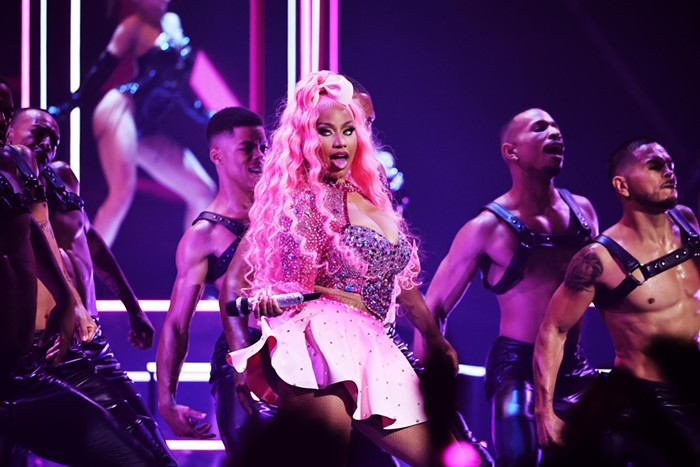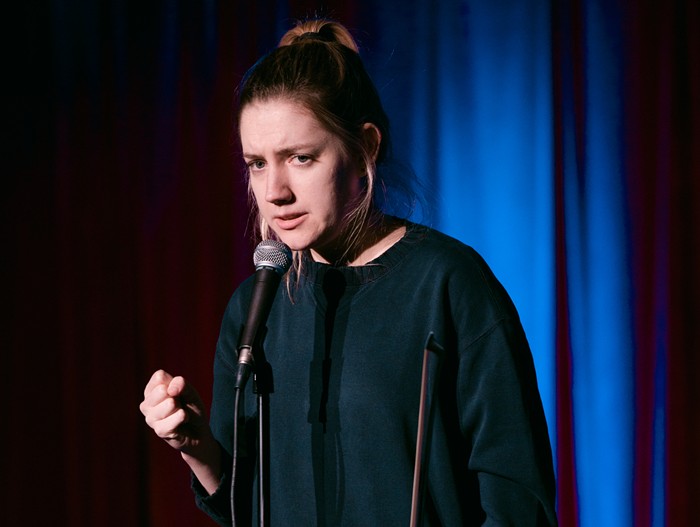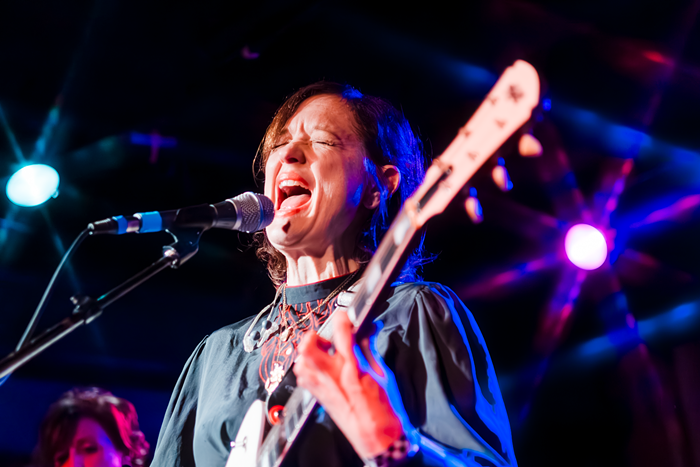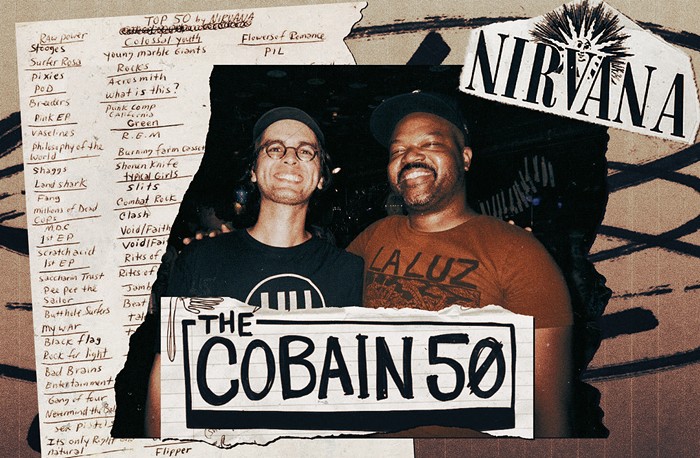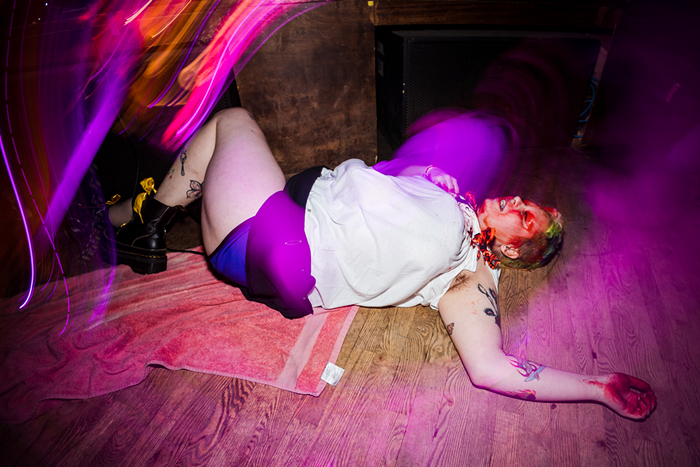When I opened Instagram last Wednesday, I was hit with a wall of photos—all Sinéad O'Connor in her 20s, with her iconic buzz cut, a slouchy leather jacket, and a nose piercing. I admit, she looked cool as hell. But why is it that when women die, we have a tendency to only share photos of them in their younger years? A woman's legacy should include more than just what we deem as her “prime.”
I have long been fascinated by women who have died young. The words and music of deceased authors and songwriters—Patsy Cline, Billie Holiday, and Sylvia Plath—haunt my shelves. I read online forums that detail the fragrances they wore just to feel closer to them. I yearn for tragic details about their lives, their deaths, and their work to be uncovered. And when I scroll down to the “death” section of famous women’s Wikipedia pages—because I always start with the “death” section—I cross my fingers for something, anything, that adds to their mysterious personal lore.
Maybe I, and so many others, love these tragic figures because they never had a chance to grow older—we only have their limited bodies of work and images of their young physical bodies to make sense of. So many questions are left unanswered. Even when someone dies later in life—not even old, but in their 40s, 50s, and 60s—we don’t want to see images of aging faces that remind us what we will eventually (and hopefully) endure. Famous women like O’Connor, even those who live beyond young adulthood and maintain successful careers, remain crystalized in time, with images from their younger years desired over their aging faces. On the rare occasion a woman manages to escape this time freeze, fans ooh and ahh at old photos, noting how beautiful she “once was.” When Sinéad O’Connor died last Wednesday morning at the age of 56 I, too, scoured for images of a young O’Connor. Now, I find myself wanting to chisel her out of the eternal stone that she’s been cast in.
If you Google O’Connor’s name right now, you will find droves of articles calling her “[unapologetically] brilliant,” “evocative and outspoken,” and an “angelic skinhead.” One article notes that O’Connor was “right all along.” Footage from her final performance (back in February 2020) has flooded the music sites. The praise for her work and bravery came within minutes of her passing. It seems that she’s already received more public sympathy, praise, and celebration than she ever did while she was alive. Where was this encouragement 10 years ago, one year ago, or even one week ago?
I have been a fan of Sinéad O’Connor’s music since well before her passing. She’s always been a part of my life, but it wasn’t until college that I became enamored with her raw vulnerability. Lion and the Cobra, released when she was just 19 years old, perfectly captured the independence, pain, and desire for escapism that I felt at that same age. On the album’s closing track “Just Call Me Joe,” O’Connor coos the chorus “Don't call me lady, just call me Joe.” Her sweet, dreamy register is contrasted by harsh humming guitars that would be at home on any Sonic Youth or Slowdive album. Her shaved head, fearless ferociousness, and defiance of traditional femininity inspired me to resist the constraints of womanhood.
My first (and only) attempt at TikTok was backtracked by the song “Mandinka.” Perhaps the fact that I’ve tried TikTok of my own volition reveals that I wasn’t alive when Lion and the Cobra was released in 1987. I was born nearly a decade later, and it was my father who first brought her into my life. It was 2006, and my sister and I were brainstorming ideas for a music video contest for Teddy Geiger’s “These Walls.” “I have an idea!” my dad exclaimed. “How about we slick your hair back, dress you in a black turtleneck, and you lip sync to the song like the ‘Nothing Compares 2 U’ video.” He pulled the video up to show us. We did not know who she was. He queued up the infamous SNL performance next.
“You’ve really never heard of her?” my dad asked. Our soft, round faces, just 10 and 13 years old, stared blankly back at him. We didn’t take his suggestion—we went with printed-out photos of Geiger’s face taped to our faces—but O’Connor’s song stuck with me. This introduction established her in my mind as an artist like Van Gogh or Elvis, a reference point I assumed everyone had.
After O’Connor’s teenage son Shane died last year, I began regularly checking her Twitter account to see how she was doing. Whether we want to admit it or not, we all have people we check in on from a distance: a former classmate, an estranged family member, or even a celebrity. Several years ago Aaron Carter gave out his personal phone number in an Instagram Live clip. From then on, my sisters would give him a ring every Christmas morning. He never picked up.
O’Connor was my Aaron Carter. I would end up Googling her name while procrastinating other responsibilities, her well-being casting a shadow over my to-do list. About two weeks ago, days before she died, I noticed O’Connor posted several links to songs on her Twitter account, including "How Can You Mend a Broken Heart" by Al Green along with two Curtis Mayfield songs from his 1997 album New World Order. These links led me to her Spotify account, which includes more than 50 playlists. The mixes are a treasure trove of Buddhist chants, classic jazz, contemporary reggae, and Bob Dylan deep cuts. I was not looking to investigate O’Connor’s personal life, but rather figure out who my favorite singer’s favorite singers are, and with a ravenous appetite for new music, I quickly peeped playlists like “Songs I Wanna Cover 2023,” “Special,” “Sacredness,” and “Trauma,” saving any song I that had not heard.
On July 17, O’Connor's final post on Twitter was a link to Choying Drolma and Steve Tibbett’s “Chenrezi.” “For all mothers of Suicided children,” she wrote in the caption, “Great Tibetan Compassion Mantra.”
At the time, I saw a woman who was stricken with life-altering grief trying her best to heal and connect with others. Now, I find myself trying to make sense of these final Tweets and playlists—embuing the songs with new meaning, informed by her death.
Sometimes, I consider what version of myself I’d like to be remembered for. What age is a person most themselves? What is the last song I will listen to, and what will it say about my life? It’s not lost on me that she did not even prefer the name Sinéad O’Connor. Over the years, she changed her name to Magda Davitt, Shuhada' Sadaqat, and, finally, Sinéad Marie-Bernarde Aoibheann O’Connor (identified on her most recent Twitter account). Back in 2005, she told the Independent: “As far as I am concerned, Sinéad O'Connor is resting in peace in some ways. That incarnation of her does not exist anymore. I don't want to perform any of those songs ever again. I will make religious records for the rest of my life.”
It’s impossible to know which version of herself she’d like to be remembered for, but I believe most people don’t feel like their authentic selves at 20 years old. Nor at their lowest points near the end of their life. What are we, if not crystal clusters of our changing identities?



